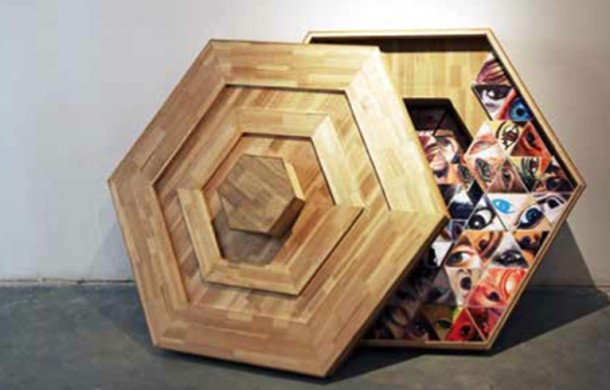LU PINGYUAN: NOT INCLUDED
| 2013年05月10日 | 发表于 LEAP 18

“Not Included” suggests to the viewer a program for contemporary art to follow, which is to continuously transform questions about its operating mechanisms into artworks. In this sense, “Not Included” is focused on providing a candid description of the ambiguous boundaries in Lu Pingyuan’s relationship with his creations. This is not the type of inclusive relationship where artist and artwork are one. Like the process of a reflection’s formation and then breakdown, on one hand the artwork tries to remove all elements that carry specific, precise, and identifying information about the artist, in order to arrive at a model for discussion that is widely accessible; on the other hand, the artist’s intention— attempting to recreate the murky state of thought crystallization during the creative process from an intellectual, historical, or even political vocabulary— is fully exposed. Lu’s ambition is to place his interest in self-examination into a complex, multidimensional context, yet at the same time to give it shape and a puzzle-like form, so that while he is revealing the secrets of how an intellectual problem is abstracted into art, he prepares the space for the intellectual problem to occur.
The most interesting part of the exhibition is trying to guess the bottom line of the relationship between the formal vocabulary that the artist has constructed and his thinking. Lu Pingyuan has admitted to being inspired by the coffins in René Magritte drawings, namely Perspective I and Perspective II, both from 1950. Tracing his influence straight back to Modernism prompts one to draw a connection between “Not Included” and Surrealism’s dialectic of spirit. André Breton viewed art as a connective device that allows inner life (dreams, the subconscious) to become factual, a dialectical tool that transforms the accidental toward becoming realistic. In the hands of Magritte, Surrealism seems to have received an even more lasting definition: the mystery of the existence of thought. Surrealism represents a kind of rational thinking ability, a dialectical force that connects the specific object with the complicated reality of its depiction. As such, the inner mystery of the eternal that exists in the surrealist perspective may be continuously revealed.
In “Not Included,” we can sense Lu Pingyuan’s attention to this inner mystery. The enigmatic titles— Compound Eyes, Athletic Tournament, Consensus, Pyramid, Private Parts, and Vigilant— and the symbols and objects that refer to them are ideological programs revealed by the dialectic between relationship and substance. The exhibition shows strong religious significance, but its totem-like implications are not without boundaries, rather pointing to the contemporary and to circumstances and problems in contemporary art creation. In Compound Eyes, Lu’s hope to express the pressure placed upon the artist by historical relationship between artworks is directly distilled to a peculiar arrangement of images of eyes, selected from different artworks. The forcefulness of the thinking behind the work can be seen in Lu’s process of capturing the abstract feeling of being watched and turning it into formal language and a work of art.
The wooden container’s exterior is homogenous, standardized, hand-carved, full of geometric shapes, and in contradiction with the various random objects inside it; only under the mysterious principle that surpasses ordinary dialectic, in a language of unpredictable abstraction, can the dialectic within this piece occur. Artworks, as existence of thought, have insides that can accommodate every hypothetical, unreal, or contradictory relationship. Within an artwork, the dialectical tension between object and thought can continue to expand as it shuttles back and forth between tangible entity and imagination. As descended from Hegel, art has been considered the best vehicle to broaden understanding and thinking. However, Lu Pingyuan has exposed the anxiety of art-making within the artwork itself, which could be considered frank and blunt honesty. However, because Lu chose to limit the growing tension inside art, to attempt an appropriate path to expression within the restrictions of jargon, he lost an opportunity for friction and convergence with the context outside of art. And despite the final plan’s complicated form and depth, it still appears conservative and hesitant. (Translated by JiaJingLiu)

